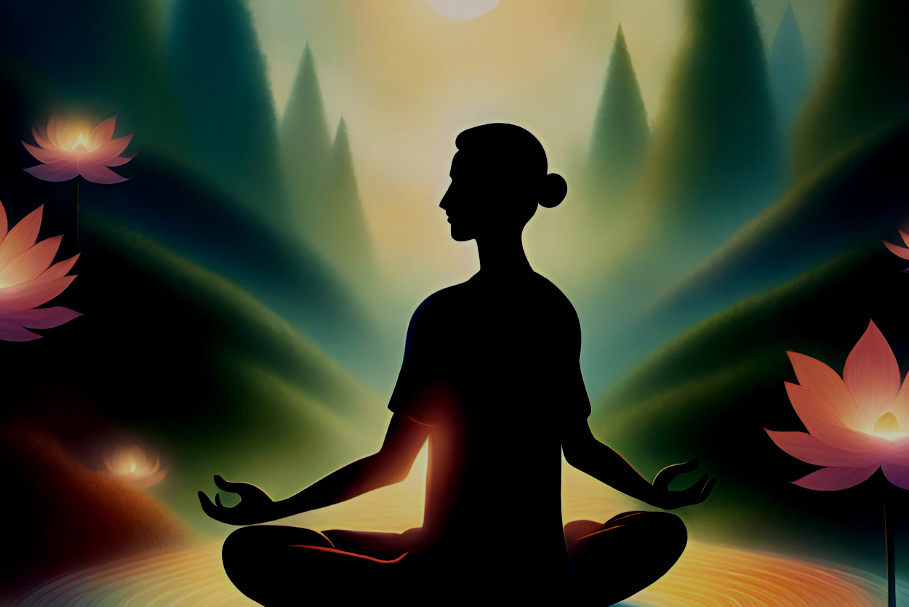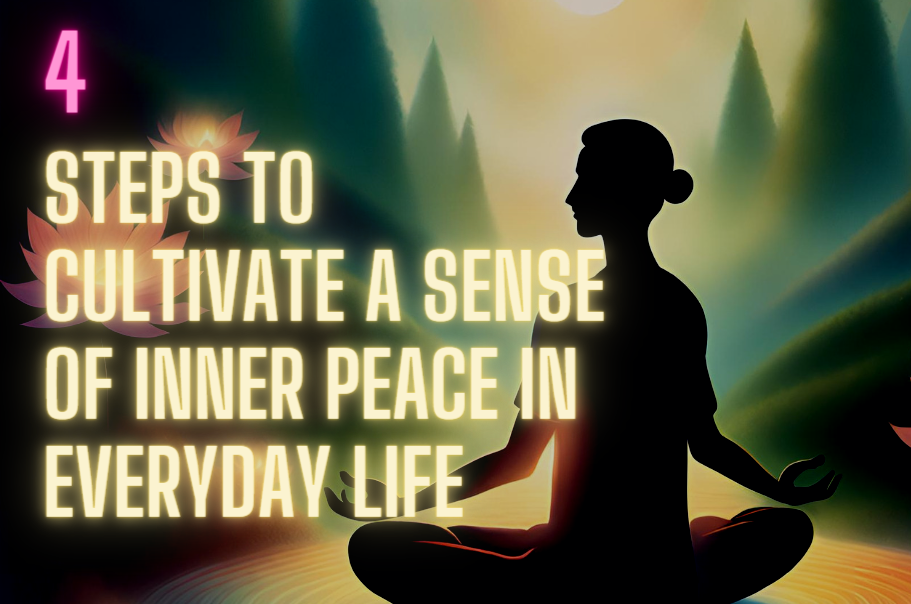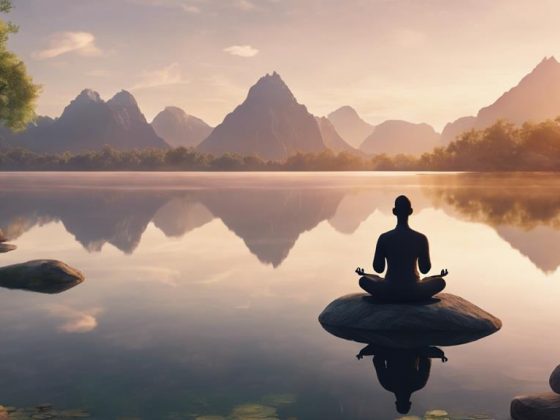4 Steps to Cultivate a Sense of Inner Peace in Everyday Life
You’re constantly searching for calm amidst the chaos, aren’t you? Imagine transforming your daily grind into a serene journey. With these four simple steps, you can cultivate inner peace that’ll stick with you through thick and thin.
Breathe deeply, count your blessings, set your limits, and move your body to unlock a tranquil mindset.
Ready to find your zen? Let’s dive into how you can make tranquility your new norm.
Embrace Mindful Breathing
To foster inner peace amidst daily turbulence, you’ll need to start by focusing on your breath within each moment. It’s the anchor that’ll bring you back to the present whenever your mind starts to race with the day’s worries. Begin by taking a slow, deep breath in, feeling the air fill your lungs and the rise of your chest. Then, exhale gently, releasing all the tension. You’ll notice a subtle shift within as you do this.
Mindful breathing isn’t just about the act of inhaling and exhaling. It’s about being fully aware of the breath’s journey through your body. Notice the coolness as you breathe in and the warmth as you breathe out. Pay attention to the rhythm—perhaps it’s erratic when you’re stressed or even when you’re relaxed. Let it be your guide towards a calmer state of being.
Make this practice a regular part of your routine. Whether you’re in line at the grocery store or in the middle of a challenging task at work, take a minute to center yourself with your breath. It’s a simple, yet powerful tool that you always carry with you. Use it to carve out moments of tranquility in your hectic life.
Prioritize Gratitude Practices
Building on the foundation of mindful breathing, you’ll find that integrating gratitude practices into your daily life can further enhance your inner peace. It’s about shifting your focus from what’s lacking to appreciating what’s present.
Start each day by listing three things you’re thankful for. It could be as simple as a warm bed or the smell of morning coffee. This simple act sets a positive tone for your day.
Carry a gratitude journal or use an app to jot down moments of thankfulness throughout your day. It’s not just about acknowledging the good stuff; it’s recognizing that challenges often bring lessons to be grateful for. Share your gratitude with others. A quick message to thank someone can uplift both your spirits and theirs.
Before bed, reflect on your day. Consider the people, experiences, and moments that brought you joy or comfort. Gratitude isn’t just a feeling; it’s an action. By actively practicing it, you’ll cultivate a more peaceful mindset.
Keep at it, and you’ll notice a shift in how you perceive and react to the world around you. Gratitude can transform your daily life, one thankful moment at a time.
Establish Boundaries Firmly
Amidst the hustle of your daily routine, it’s vital that you set boundaries to safeguard your inner peace. These invisible lines define what you’re comfortable with and protect your emotional well-being. Remember, saying ‘no’ isn’t rude; it’s a necessary assertion of your values and limits.
Think of your boundaries as a personal property line. Just as you wouldn’t let someone trample your garden, don’t let others overstep your mental or emotional space. Be clear about your limits with friends, family, and colleagues. If you’re overloaded at work, clarify your capacity. If social engagements drain you, it’s okay to decline an invitation.
Establishing these limits doesn’t happen overnight. It starts with knowing yourself. Identify what causes stress or discomfort and communicate these feelings confidently. People can’t read your mind, so it’s up to you to articulate your needs.
Engage in Regular Movement
After setting your boundaries, it’s essential you also weave regular physical activity into your routine to maintain your inner calm. Whether it’s a brisk walk, a yoga session, or an energetic dance class, moving your body can be incredibly therapeutic. It’s not just about the endorphins—those natural mood lifters—but also about carving out time for yourself, away from the hustle and bustle of daily life.
You don’t need to push yourself into intense workouts unless that’s what you enjoy. Even gentle forms of exercise like stretching or tai chi can center your thoughts and help you find balance. The key is consistency. Find an activity that fits seamlessly into your lifestyle and commit to it.
Remember, movement is a celebration of what your body can do, not a punishment for what you ate or how you look. It’s a chance to disconnect from stress and reconnect with yourself. So, lace up your sneakers or unroll your yoga mat with the intention of honoring your body and nurturing your peace of mind.
Your soul—and your muscles—will thank you for it.
Frequently Asked Questions
How Can Dealing With Difficult Past Experiences Contribute to Cultivating Inner Peace?
Dealing with difficult past experiences can free you from lingering pain and resentment. When you confront and process these memories, you’re not just dragging up old emotions; you’re giving yourself a chance to heal and move forward.
This emotional work can lead to a calmer, more centered you, making it easier to find your inner peace amidst life’s chaos. It’s about releasing the hold the past has on you to embrace the present.
Are There Specific Dietary Choices That Can Enhance One’s Sense of Inner Peace?
Absolutely, your dietary choices can influence your sense of calm. Foods rich in magnesium, omega-3 fatty acids, and antioxidants can reduce stress and improve mood.
Cutting back on caffeine and sugar might help you feel more balanced.
How Can One Maintain Inner Peace When Facing Constant Negativity or Criticism From Others?
When you’re constantly bombarded with negativity or criticism, it’s crucial to stay grounded. Don’t take others’ words personally; they’re often projecting their own issues.
Instead, focus on maintaining your self-esteem and boundaries. Practice deep breathing or meditation to stay calm, and remind yourself of your worth regardless of external opinions.
Surround yourself with positivity, and remember that you’re in control of your reactions, not the actions of others.
Can Cultivating Inner Peace Have a Measurable Impact on Physical Health or Longevity?
Absolutely, cultivating inner peace can positively affect your physical health and potentially extend your lifespan.
When you’re at peace, you’re likely to experience lower stress levels, which reduces your risk of chronic diseases.
This tranquility can improve heart health, boost your immune system, and encourage healthier lifestyle choices.
What Role Does Community or Social Interaction Play in Fostering an Individual’s Inner Peace?
Community and social interaction are vital for your inner peace. They provide a support system, reduce loneliness, and increase feelings of belonging. When you connect with others, you’re more likely to feel understood and valued.
Sharing experiences and emotions with friends or family can help you process your own feelings and find tranquility. So, don’t underestimate the power of a good chat or a shared laugh to bring you a sense of calm.
Conclusion
You’ve got this. Breathe deeply and stay present.
Count your blessings daily and watch your perspective shift.
Remember, your peace is precious—guard it with clear boundaries.
And don’t forget to move; your body’s rhythm can be a calming force.
These steps aren’t just actions; they’re your pathway to a tranquil core.
So go ahead, weave them into the fabric of your life, and embrace the calm that follows.





